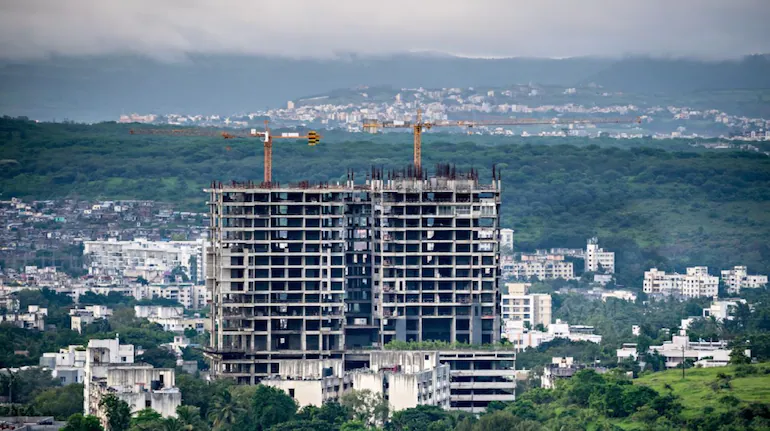Government Proposes ₹60,000 Crore Housing Loan Subsidy Scheme to Propel Affordable Urban Housing

Government Proposes ₹60,000 Crore Housing Loan Subsidy Scheme to Propel Affordable Urban Housing
In a significant stride towards addressing the burgeoning housing needs of India’s urban population, the Indian government is contemplating a monumental ₹60,000 crore housing loan subsidy scheme. This visionary initiative aims to offer subsidised loans for small urban housing, spanning the next five years. The scheme has garnered attention for its commitment to providing an annual interest subsidy ranging from 3% to 6.5% on housing loans of up to ₹9 lakh. To qualify for this game-changing programme, housing loans below ₹50 lakh must be availed for a tenure of 20 years.
Background and Rationale
As India continues to urbanize rapidly, the need for affordable housing solutions has never been more critical. The soaring real estate prices in urban areas have made homeownership an elusive dream for many citizens. Recognizing this pressing issue, the government is taking proactive steps to ensure that a more significant portion of the population can access quality housing without being burdened by exorbitant interest rates.
The scheme’s foundation lies in the belief that housing is a fundamental right and a catalyst for economic growth. Adequate housing not only ensures shelter and security but also promotes social stability and economic development. By offering subsidised loans, the government hopes to stimulate the construction and real estate sectors, create employment opportunities, and enhance overall living standards.

Key Features of the Scheme
1. Interest Subsidy: The heart of this ambitious scheme lies in its interest subsidy component. Eligible beneficiaries can expect a substantial reduction in their annual interest rates, ranging from 3% to 6.5%. This reduction will significantly ease the financial burden of repaying housing loans, making homeownership more attainable.
2. Loan Amount Limit: To qualify for this subsidy, the housing loan amount must not exceed ₹9 lakh. This cap ensures that the scheme predominantly targets small and medium-income families, the segment most in need of affordable housing options.
3. Loan Tenure: Housing loans with a maximum tenure of 20 years fall within the scheme’s ambit. This extended repayment period grants borrowers more flexibility in managing their finances, aligning with their income levels.
4. Urban Focus: The scheme is primarily designed to address the housing needs of the urban population. India’s rapid urbanization has created a substantial demand for affordable urban housing, and this scheme intends to bridge that gap.
5. Inclusivity: By not restricting the loan amount to a specific income bracket, the scheme fosters inclusivity. It caters to a wide range of individuals and families, ensuring that more people can benefit from the interest subsidy.
Impact and Benefits
The proposed ₹60,000 crore housing loan subsidy scheme promises to have a far-reaching impact on various sectors and aspects of Indian society:
1. Affordable Housing Boom: The subsidised interest rates are expected to catalyse the affordable housing sector’s growth, fostering the development of more budget-friendly housing projects across urban India.
2. Job Creation: The construction and real estate industries are among the largest employment generators in India. This scheme is likely to result in a surge in construction activities, creating job opportunities for skilled and unskilled workers alike.
3. Economic Growth: A thriving housing sector contributes significantly to a nation’s economic growth. Increased construction and housing activities will stimulate various ancillary industries, further strengthening India’s economy.
4. Reduced Financial Stress: Lower interest rates and extended loan tenures will ease the financial burden on borrowers, reducing the risk of defaults and enhancing financial stability for families.
5. Inclusive Development: By catering to a broader income range, the scheme promotes inclusive development, ensuring that a more extensive section of the population can partake in India’s growth story.

Challenges and Implementation
While the scheme holds immense promise, its successful implementation will depend on several factors:
1. Effective Outreach: The government must ensure that information about the scheme reaches the intended beneficiaries, especially in remote and underserved areas.
2. Lending Practices: Banks and financial institutions must adhere to transparent and ethical lending practices to avoid potential exploitation of borrowers.
3. Monitoring and Evaluation: Robust monitoring and evaluation mechanisms are essential to ensure that the scheme achieves its objectives and that funds are utilised judiciously.
4. Funding Allocation: Proper allocation of the ₹60,000 crore budget is crucial to guarantee that the scheme’s benefits are maximised.
Ensuring Transparency and Accountability
To instill public confidence and maintain the scheme’s integrity, transparency and accountability must be at the forefront of its implementation. The government should establish clear guidelines and robust auditing mechanisms to track the allocation and utilization of the ₹60,000 crore budget. This transparency will help prevent misuse of funds and ensure that they are channeled effectively towards achieving the scheme’s objectives.
Furthermore, collaboration between government agencies, banks, and financial institutions will be pivotal in ensuring that the scheme reaches its intended beneficiaries. Regular reviews and feedback mechanisms can help streamline the process, making it more accessible and responsive to the evolving needs of urban populations.

Sustainable Housing Ecosystem
While the scheme’s immediate goal is to provide affordable housing loans, its long-term impact should also focus on fostering a sustainable housing ecosystem. This means promoting eco-friendly construction practices, energy-efficient housing designs, and infrastructure that supports urban development without straining resources. A holistic approach to housing can lead to not only improved living conditions but also a reduced environmental footprint.
Global Inspiration
India can draw inspiration from successful international models of affordable housing schemes. Countries like Singapore, for instance, have implemented innovative housing policies that prioritize citizens’ needs and enhance their quality of life. Studying such models and adapting the best practices can enrich the Indian scheme, ensuring that it evolves to meet the diverse and dynamic demands of urbanization.
Conclusion
In a landmark move, the Indian government is poised to launch a ₹60,000 crore housing loan subsidy scheme, ushering in a new era of affordable urban housing. By providing interest subsidies on loans up to ₹9 lakh, this initiative addresses the critical need for accessible housing solutions in India’s growing urban centres. With a focus on inclusivity and economic growth, the scheme is set to have a transformative impact on the lives of countless citizens, propelling India’s progress towards a more equitable and prosperous future.



